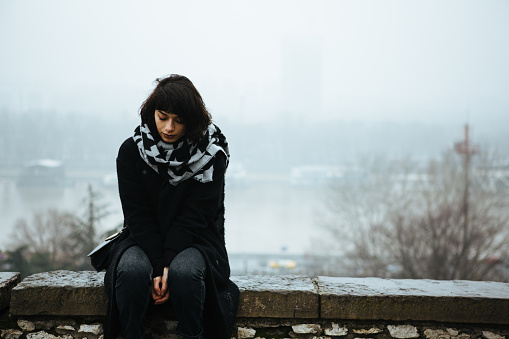There are days when cold washes over you. You do not feel like getting out of your bed and finishing your errands. You have hit rock bottom of sad-ness deep inside your mind at the very moment. Staying at that point floods you with thoughts if you are worthy of joy and happiness. Even if some deadlines force you to step out, you float like a dark cloud full of sadness. In this state, happiness appears like a weird stranger.
Seasonal Affective Disorder (SAD) casts a shadow on the intersection of mood and changing seasons. As sunlight dwindles and winter’s chill sets in, individuals grappling with SAD may find their mental health dimming in tandem. This disorder, often misunderstood, goes beyond the winter blues, delving into a complex interplay of biology and environment. The symptoms, ranging from lethargy to mood swings, create a poignant narrative of how sunlight influences our well-being. Light therapy emerges as a beacon of hope, mimicking the sun’s glow to alleviate the darkness that SAD imposes. Recognizing the nuances of this seasonal dance allows for empathy and support, urging us to shine a light on the shadows that SAD can cast and fostering a compassionate understanding of those navigating this intricate emotional terrain.
It is what a person with Seasonal Affective Disorder struggles with. Let’s learn more about SAD:
What Is Seasonal Affective Disorder (SAD)?
SAD is a type of depression that occurs during a particular season or time of the year. Low energy and sadness characterize this disorder that can resolve within a few months but can affect your daily life experiences. Thus, seeking consultation from experts of psychiatry in Dubai can significantly diminish its impact.
It usually occurs at the same time each year, most commonly during the dark and cold days of autumn and winters. For instance, while everyone is cheering for Christmas and decorating the tree with lights and baubles, you are sitting in the corner, watching the blurred Christmas lights gleaming through tears.
Noticeably, it is quite common for individuals with SAD to confront seasonal fluctuation. On rainy days, you might feel gloomy and tired, but you feel energized and happy on bright sunny days.
What Are The Symptoms of SAD?
If you are experiencing SAD, you might find yourself in the intensified screech of the symptoms below. However, it is different for each person and can differ from season to season, so you might need to seek help from a renowned psychologist in Dubai.
- Deficient energy or fatigue
- Difficult to pay attention
- Social isolation or withdrawal Problematic sleeping patterns such as sleeping more than usual, difficulty in waking up or staying up late
- Alteration in eating habits such as overeating and demanding snacks or food with high carbohydrates
- Massive weight gain
- Interpersonal difficulties such as increased sensitivity to rejection
- Irritability
- Heavy, laden feeling in arms or legs
- Feelings of worthlessness and excessive guilt
What Is The Treatment For SAD?
SAD responds to the treatment effectively. The most common treatments are light therapy, antidepressant medications, talking therapies and psychotherapy. Learn more about them below:
Light Therapy
Light therapy, also known as phototherapy, is easy-to-use as it involves a lamp or a bright lightbox which you can simply plug in and sit near it for your eyes and skin to absorb light. These devices give off light that imitates sunshine. Exposure to light will help bring your circadian rhythm on track. Hence, it will boost your mood and alleviate the symptoms of SAD.
In addition, light therapy should start during the early morning, upon awakening. It will maximize the treatment response. Also, the results will become visible within one week.
Antidepressant Medications
Selective Serotonin Reuptake Inhibitors (SSRIs) are the most commonly used antidepressant medications for SAD. They will put you in a place where you will be able to cope with counseling. They are often prescribed light therapy or psychotherapy.
Psychotherapy
Cognitive-behavioral therapy (CBT) is one of the effective treatments for SAD, mainly if it is used in conjunction with light therapy and medication. This procedure will help identify the negative thinking pattern and replace it with positive and healthy ones.
For instance, you feel worthless and believe that your life is terrible. Some days, you wake up obsessing over your flaws and imperfections. CBT will make you aware of such problematic thoughts. It will encourage you to swap them with healthier ones. This change in attitude will bring fruitful changes in your behavior. As a result, the symptoms of seasonal depression will decrease.
Cope Up!
It is crucial to treat SAD so that you can enjoy your life to the fullest, make countless happy memories with your family and function well at work. To do so, you can incorporate healthy habits into your life and make lifestyle choices that can significantly reduce the symptoms of SAD.
To help manage SAD, you can prioritize social activities such as walking, hanging out with friends at a local park and participating in outdoor sports and games. Besides talking to your best psychologist in Dubai, add aromatherapy to your treatment plan. Oils stimulate the areas of the brain that control your mood and improve your sleeping pattern and appetite. To conclude, stick to a schedule and increase vitamin D intake until the season ends to alleviate the SAD.
